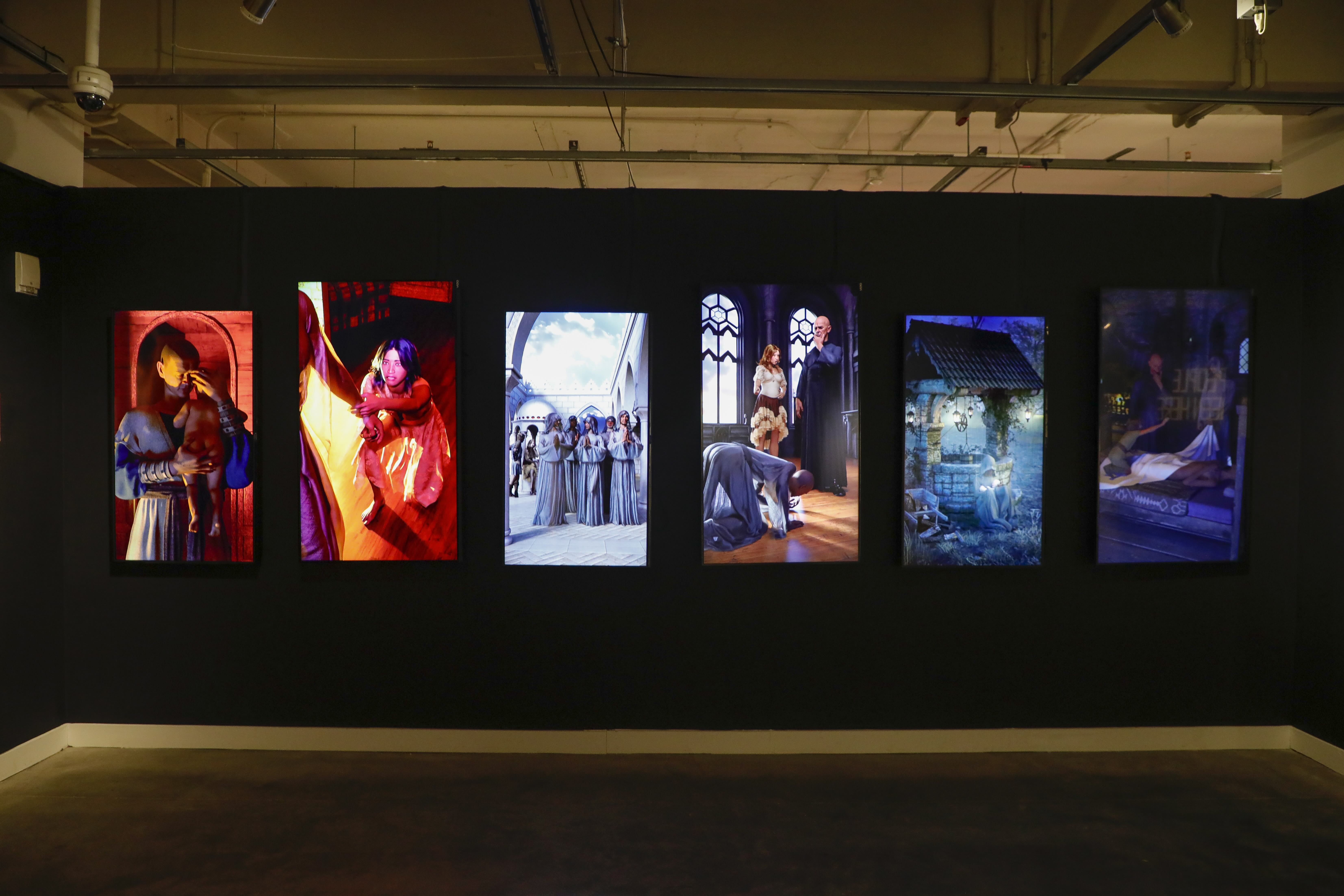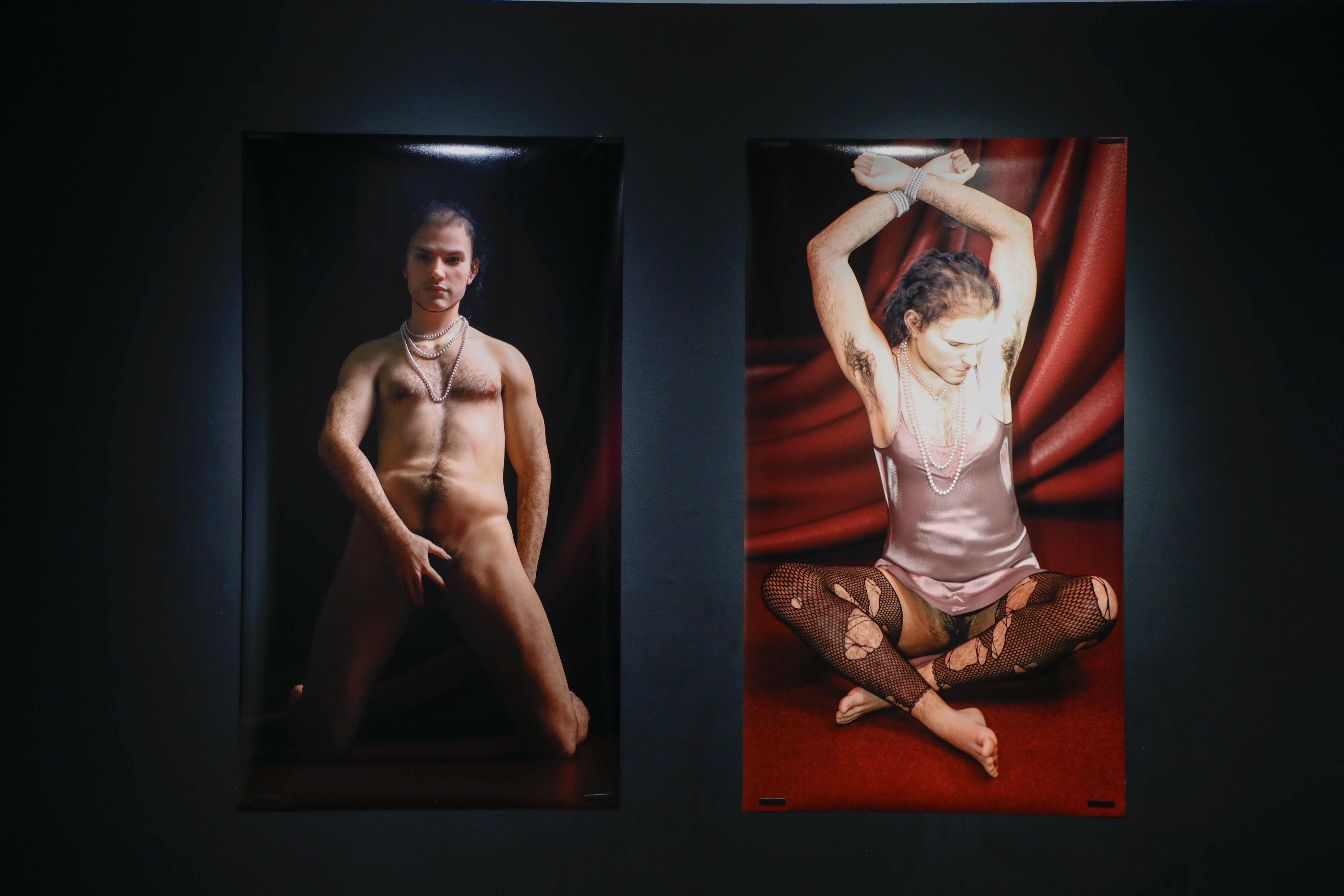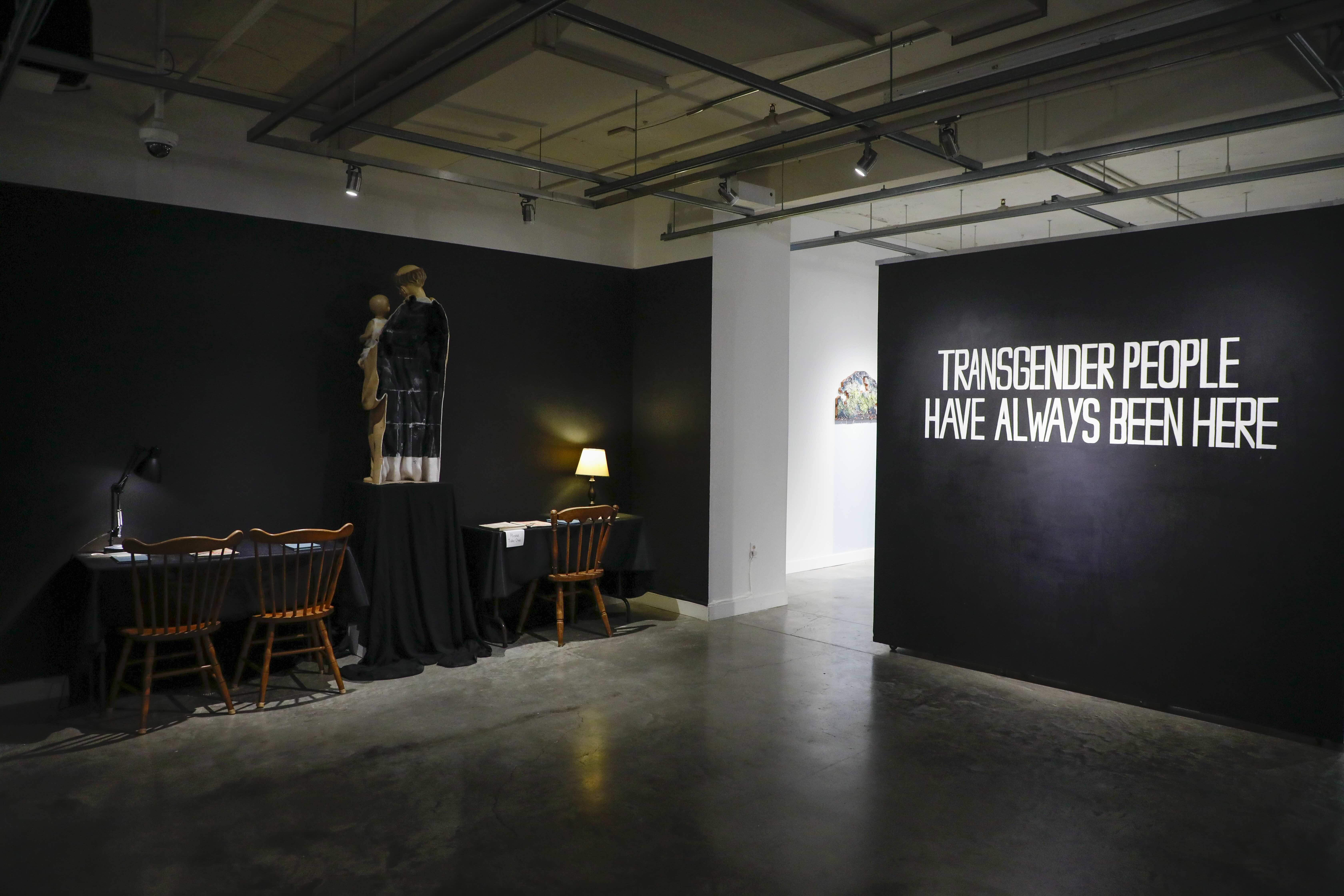Transgender People Have Always Been Here: An Interview with Artist Julian Robbins

Julian Robbins is a multidisciplinary artist whose work bridges digital and physical realms, exploring themes of identity, history, and storytelling. Their current installation features inkjet prints, a multi-channel digital display, and two artist’s books that explore the lives of “transvestite saints.” Their work is currently on view at Urban Arts Space in Desire Lines, an MFA Thesis exhibition, until March 15. The gallery is open daily from 11:00 AM–6:00 PM.
What inspired you to research historical transgender narratives, and how do you believe this work will impact modern gendered experiences?
My interest in historical transgender narratives is driven by both personal and academic motivations. Like many transgender people, I grew up without access to a history that acknowledged my existence. Much of this absence is the result of deliberate erasure—including through the Nazi burning of books from the Institut für Sexualwissenschaft (Institute for Sexual Research) or the more recent purging of CDC documents that referenced terms including “gender,” “transgender,” “transsexual,” “non-binary,” and “pregnant person.” These acts of censorship are not isolated incidents but part of a broader, ongoing effort to erase transgender lives from public record and collective memory.
The dominant narrative, supported by these deliberate acts of erasure, often frames transgender identities as a modern invention, something new or unprecedented. In reality, gender variance has existed throughout history. My research—particularly my engagement with figures like Marinos the Monk—directly challenges this erasure, reaffirming that transgender people have always been here. At a time when trans existence is increasingly under attack, making this history visible is more crucial than ever.
By bringing these historical narratives into contemporary discourse, I hope to offer a sense of continuity, belonging, and empowerment to transgender people today. When we see ourselves in history, we gain a stronger foundation for imagining and advocating for a future where gender-variance is accepted as a facet of human diversity. At the same time, this work also disrupts the rigid structures that still define gendered experiences today, pushing audiences to question how narratives about gender are constructed, controlled, and often weaponized.

How did you get involved in the process of 3D digital creation, and how does it reframe your personal art practice?
My early experiences with 3D digital media were shaped by video games, online archives, and collaborative animation projects, spaces where identity could be fluid, where history and fiction blurred, and where self-expression felt more accessible than in the physical world.
When I started college, I was a linguistics major on a pre-law track. After a difficult experience with artmaking in high school, I had resigned myself to being an “art hobbyist,” focusing instead on securing a stable career that would allow me to create in my free time. That changed when I enrolled in 3D Modeling Sculpture in the OSU art department. Until then, my practice had been primarily in painting and drawing, but I became captivated by the ability to construct entire worlds within virtual 3D space. The experience, combined with the enthusiastic support of my professor, reignited my passion for art and made me reconsider it as more than just a side pursuit—art became something central to my life once again.
3D digital creation allows me to manipulate time, space, and narrative in ways that traditional media cannot. When working with historical figures like Marinos, 3D rendering allows me to reconstruct and reimagine their world—offering not just an intellectual engagement with history, but a visual and emotional one. Digital tools also let me challenge the ways transgender bodies are represented in art, refusing both hypervisibility and erasure, and instead embracing complexity, ambiguity, and fluidity.
The concept of digital pilgrimage is central to your practice. From your perspective, what is the importance of digital space in personal autonomy for neurodivergent and transgender people?
For both neurodivergent and transgender people, digital space can be a lifeline—a place to explore, connect, and exist on one’s own terms. “Real” spaces, that is, social institutions such as schools, churches, and recreational organizations, often reinforce barriers that exclude or marginalize us. Digital spaces, on the other hand, offer opportunities for self-curation and discovery.
I think of digital pilgrimage as the process of navigating these spaces in search of meaning, identity, or community. Just as medieval pilgrims sought out relics or sacred sites, many trans people—myself included—have found validation and understanding through digital archives, online communities, and virtual representations of gender, such as in video games. These spaces allow for experimentation and self-actualization without immediate risk, giving people the autonomy to explore their identities without external policing.
At the same time, digital pilgrimage is not just about personal discovery—it’s also about reclaiming history. Many of the figures I research, like Marinos the Monk, are accessible to me only because of digital archives and databases. Without these resources, their stories might have remained hidden or inaccessible. By engaging with these narratives digitally, I am both preserving and reimagining them, ensuring they are part of a living, evolving dialogue about gender.

Did you encounter any challenges translating historical transgender narratives onto the digital platform?
Absolutely. One of the biggest challenges is grappling with historical gaps and biases in the records themselves. Many transgender figures in history were deliberately misrepresented or erased, their lives reinterpreted through rigid binary frameworks. When reconstructing Marinos’s story, for example, I had to navigate between historical texts that framed him as a virtuous woman who disguised herself as a man and contemporary transgender readings that recognize him as a man in his own right. Balancing these perspectives while maintaining respect for both historical context and modern transgender identity was a delicate process.
Another challenge was navigating the visual representation of transgender bodies in a digital medium. Software like Daz3D is often optimized for hyper-gendered, idealized figures, with very few pre-made assets for trans bodies. This meant that, rather than using premade assets, I had to manually alter and customize 3D models to represent transgender figures in ways that felt authentic.
I also had to carefully consider how to approach race in my work. Race, as we understand it today, did not exist in the same way in the 6th century, and I had to decide how to depict the characters in The Life of Marinos. Because I am constructing these worlds through a process of digital dreaming, I did not feel bound to replicating the racial depictions found in illuminated manuscripts, where these figures are typically represented as white. Instead, I made intentional choices about racial representation, particularly in relation to power and marginalization. The figures that embody oppression within the story—the woman who falsely accuses Marinos of rape and the abbot who enforces his punishment—are depicted as white. This decision serves as a commentary on how multiple axes of marginalization, including race, shape transgender experiences both historically and in the present. Marinos and his father are not white, but are racially ambiguous. This choice reflects the significant racial diversity of the Byzantine Empire, where this story originates, and resists the homogenizing tendencies of Western historical representation.


